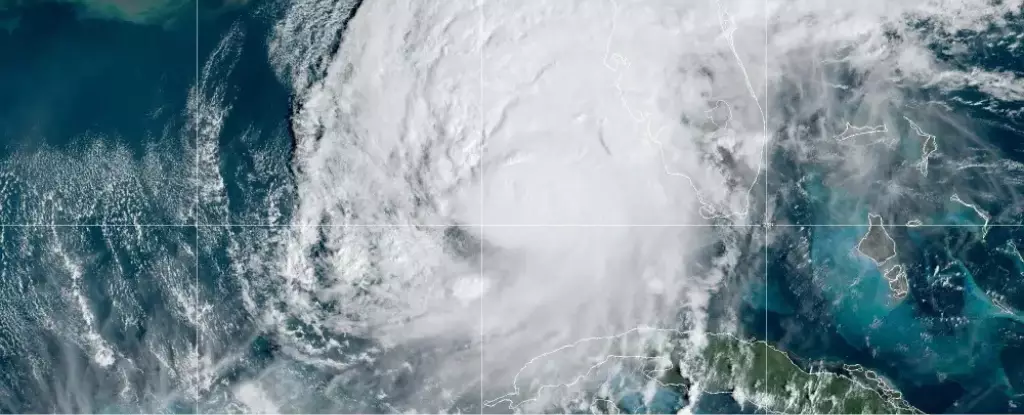The Atlantic hurricane season has taken unexpected turns this year. Following a scarcity of storm activity in August, the atmosphere has suddenly ignited with the emergence of Hurricane Milton, now classified as a potent Category 4. As Florida grapples with the damages incurred from Hurricane Helene just weeks prior, the state braces itself once again for another storm surge. This back-to-back onslaught prompts alarm about the season’s intensity and what lies ahead. Experts continue to warn that this year’s hurricane season is not merely a series of isolated events but tells a more complex and concerning story.
Meteorological forecasts can provide essential insight into what might transpire during a hurricane season, yet they remain riddled with uncertainty. The National Oceanic and Atmospheric Administration (NOAA) had initially forecasted an active season, marking spring and summer with early storms: Beryl, Debby, and Ernesto. However, an unanticipated lull engulfed the Atlantic from August 13 to September 3. This atypical silence stands in stark contrast to earlier predictions.
What does this irregularity signify? According to Kelly Núñez Ocasio from Texas A&M University, such fluctuations are products of climatic forces at play. The summer months have seen key weather patterns—such as the African monsoon and the phenomenon known as La Niña—acting out of sync with their usual behavior. While the onset of the hurricane season has indicated turbulent potential, seasonal shifts and weather dynamics often complicate forecasts itself, transforming calm into chaos in a matter of days.
In examining the dynamics of this year’s season further, the influence of Africa’s monsoon rises as a crucial factor. Typically, the African monsoon provides the foundational moisture necessary for storm formation across the Atlantic. However, this year, it has approached drier terrains, hindering storm activity. A recent study by Colorado State University highlights how these patterns contribute directly to cyclone development.
Moreover, La Niña, recognized for cooling tropical ocean temperatures and facilitating storm formation by reducing wind shear, has been looming just below the radar. Matthew Rosencrans, NOAA’s lead hurricane forecaster, confirms that while La Niña is gearing up, the consequent effects may yield heightened storm activity moving forward. As La Niña intensifies, scientists are keeping a watchful eye on how it redraws the boundaries of storm formation in the Caribbean and Gulf regions.
The presence of excessively warm waters throughout the Gulf of Mexico provides optimal conditions for storms to gain strength. Each square inch of this vast body of water holds temperatures conducive to rapid tropical storm intensification. Stephanie Zick from Virginia Tech emphasizes that warmer waters are crucial components feeding hurricane energy. An unsettling reality remains: as climate change progresses, the frequency of these warm water pockets creates a precarious environment for storm development.
A significant concern lies in emerging trends regarding the relationship between moisture levels and storm activity. Research spearheaded by Núñez Ocasio suggests a tipping point exists; while typically more moisture leads to increased hurricane activity, excessive moisture could provoke heightened instability in the African monsoon. What follows may be an unusual delay in the onset of hurricanes or a shift in their regular seasonal rhythm, potentially extending the timeframe for peak hurricane occurrences.
Within this context, the need for preparedness has never been more pressing. As meteorological unpredictability becomes the new normal, ensuring that communities have a robust disaster response plan becomes crucial. Scientists like Núñez Ocasio remind us that the research community’s primary objective is to safeguard lives and properties, which is essential as the Atlantic hurricane season continues to evolve in unpredictable ways.
The narratives of recent storms, marked by intensity and frequency, hold lessons for both authorities and communities. Awareness, research, and preparedness strategies must come together to manage the increasing challenges posed by a changing climate. As this hurricane season unfolds, the world watches closely, aware that each storm contributes to a larger understanding of the forces at play—a reminder of nature’s sometimes violent simplicity amidst the complex web of climate dynamics.


Leave a Reply